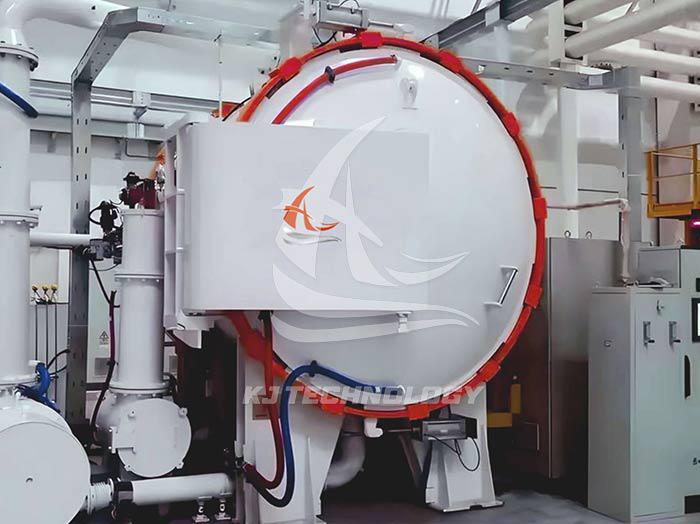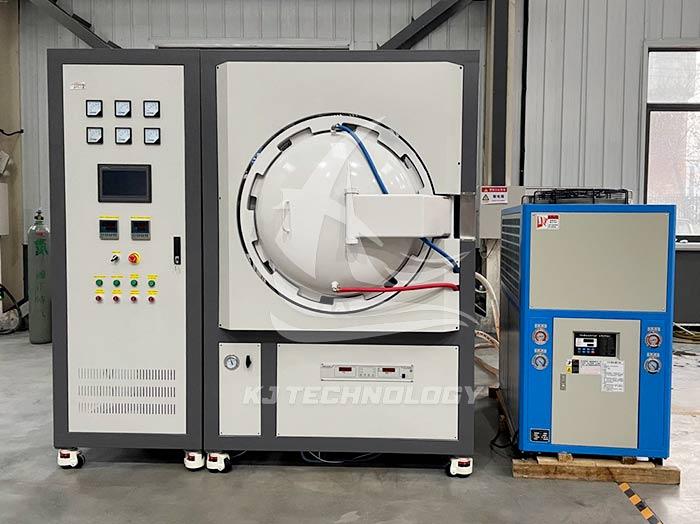How to sinter silicon nitride in a customized vacuum sintering furnace?
 04-15-2025 Author: KJ technology
04-15-2025 Author: KJ technology
The process of sintering silicon nitride in a customized vacuum sintering furnace involves multiple key steps and parameter control. The following is a detailed summary of this process:
1. Raw material preparation
Silicon nitride powder: Select high-purity and uniformly sized silicon nitride powder as the raw material.
Sintering additives: Add appropriate amounts of sintering additives such as magnesium oxide (MgO) as needed to promote sintering and improve material properties.
2. Furnace installation and sealing
Furnace loading: Mix silicon nitride powder and sintering aids evenly and load them into a customized vacuum sintering furnace. Pay attention to the furnace loading method and density control to ensure the uniformity and density of the material during the sintering process.
Sealing: Close the furnace door and ensure that the furnace is well sealed to avoid air leakage during the sintering process.
3. Vacuum pumping
Start the vacuum system and gradually reduce the pressure inside the furnace to the required vacuum level. The control of vacuum degree is crucial to avoid oxidation and impurity introduction.
4. Heating and sintering
Heating stage: Gradually increase the temperature inside the furnace according to the preset sintering curve. The selection of heating rate requires comprehensive consideration of the thermal stability of the material, the activity of sintering aids, and the heating capacity of the furnace.
Insulation stage: When the furnace temperature reaches the sintering temperature, maintain this temperature for a period of time to fully sinter and densify the silicon nitride powder. The length of insulation time depends on the type, particle size, and required sintering effect of the material.
Cooling stage: After sintering is completed, slowly reduce the furnace temperature according to the set cooling rate. The control of cooling rate is crucial for avoiding material cracking and maintaining its performance stability.
5. Key parameter control
Vacuum degree: Throughout the sintering process, it is necessary to maintain a stable vacuum degree in the furnace to avoid oxidation and the introduction of impurities.
Sintering temperature: The choice of sintering temperature depends on the type of silicon nitride and the desired sintering effect. Generally speaking, the sintering temperature of silicon nitride is relatively high, usually above 1600 ℃.
Heating rate and holding time: These two parameters need to be precisely controlled according to the characteristics of the material and the requirements of the sintering process to ensure the stability and quality of the sintering process.
6. Subsequent processing
Cooling: After sintering is completed, let the furnace cool naturally to room temperature.
Sampling and testing: Take out the sintered silicon nitride material for visual inspection, density measurement, hardness testing, etc., to evaluate the sintering effect.
7. Precautions
Avoiding pollution: During the sintering process, it is necessary to avoid introducing any impurities or pollutants into the furnace to avoid affecting the performance of silicon nitride materials.
Safe operation: Due to the high temperature and vacuum environment involved in vacuum sintering furnaces, it is necessary to strictly follow safety regulations during operation to ensure the safety of personnel and equipment.








